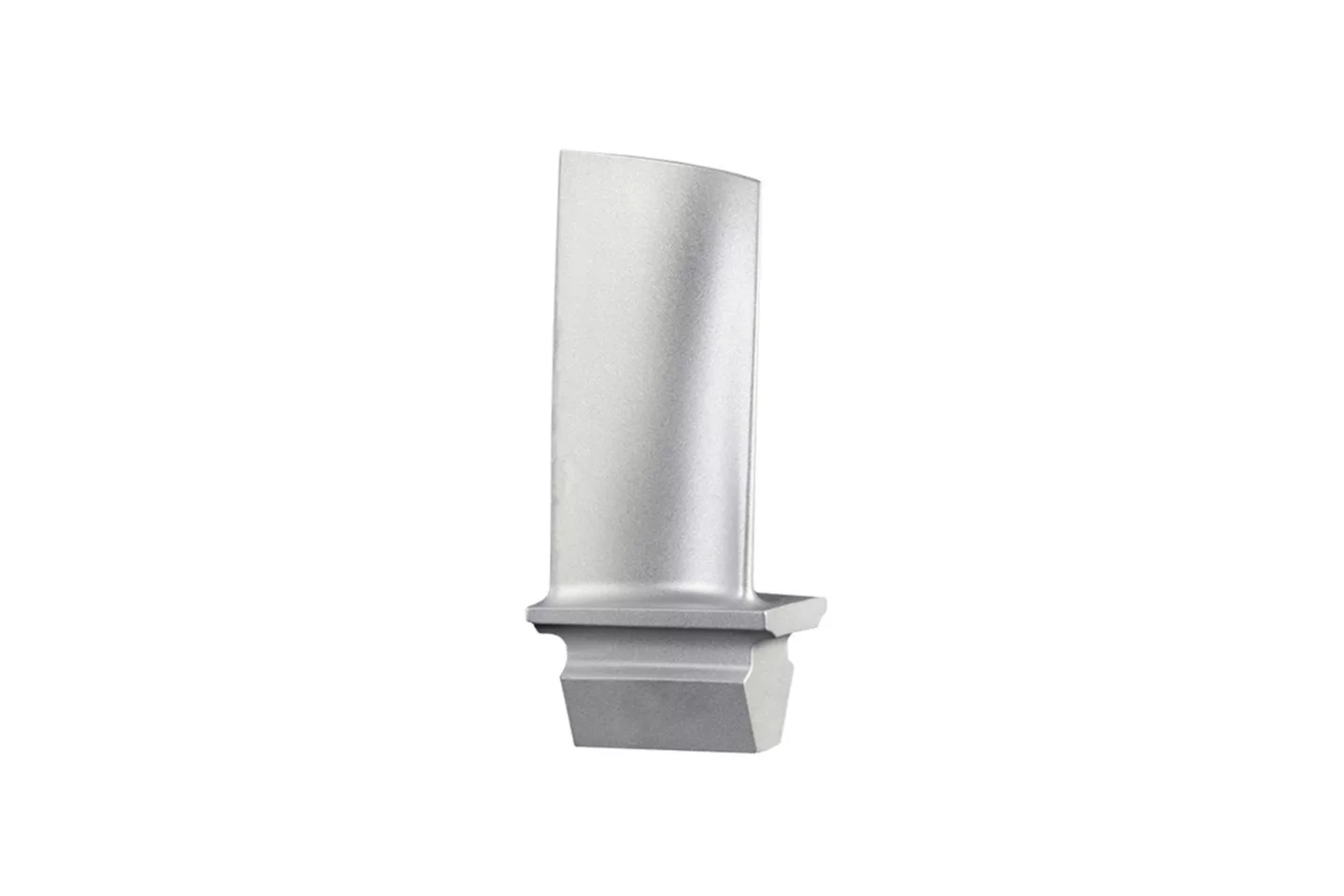Inconel 718 Superalloy 3D Printing Gas Turbine Blade
Introduction
Inconel 718 3D printing enables the production of complex gas turbine blades with high thermal fatigue resistance, excellent creep performance, and minimal post-processing requirements. At Neway AeroTech, we manufacture gas turbine blades using Inconel 718 through Selective Laser Melting (SLM) and Direct Energy Deposition (DED), achieving dimensional tolerances of ±0.05 mm and structural integrity suitable for continuous service at 700–750°C. These blades are used in aerospace propulsion, power generation, and industrial gas turbines.
By leveraging additive manufacturing, we reduce lead times, eliminate tooling, and enable aerodynamic and cooling designs that are impossible with conventional casting or forging.
Material Characteristics of Inconel 718 for 3D Printed Turbine Blades
Property | Value |
|---|---|
Max Operating Temperature | 750°C |
Ultimate Tensile Strength | 1240–1380 MPa |
Yield Strength | ≥1030 MPa |
Fatigue Resistance | Excellent high-cycle and low-cycle |
Creep Resistance | Stable up to 700°C |
Corrosion Resistance | Excellent in oxidizing and hot gas environments |
Print Accuracy | ±0.05 mm |
Case Study: 3D Printed Inconel 718 Blade for Industrial Gas Turbine Upgrade
Project Background
A gas turbine service provider required rapid replacement of HPT blades with improved cooling channels for a 15 MW-class industrial turbine. Traditional casting required 14–16 weeks; using 3D printing, Neway AeroTech delivered prototype and functional blades in under 3 weeks.
Typical Applications of Inconel 718 3D Printed Turbine Blades
High-Pressure Turbine (HPT) Blades: Withstand >12,000 RPM and >700°C in commercial and industrial gas turbines.
Power Generation Turbine Blades: Used in base-load and peaking turbines where corrosion resistance and rapid production are critical.
Aerospace Auxiliary Power Units (APUs): Lightweight, fatigue-resistant blades for small turbine sections with complex cooling geometry.
Turbocharger Turbine Wheels: Integrated impeller and blade designs for high-efficiency microturbine systems.
Manufacturing Solution
Design Optimization: 3D CAD models modified to include internal lattice cooling, film cooling holes, and trailing edge reinforcements.
SLM Printing: High-resolution printing at 30–50 µm layer height using fine Inconel 718 powder, ensuring full density and surface precision.
Heat Treatment: Post-build solution and aging treatment (980°C + aging at 720°C and 620°C) to restore mechanical properties comparable to wrought alloys.
Precision Machining: CNC machining of root platforms and tight-tolerance fits to ±0.02 mm.
TBC Coating (Optional): Thermal Barrier Coating applied to external surfaces for hot gas erosion resistance and surface temperature reduction.
Inspection & Qualification: Internal structure verified via X-ray inspection; geometry confirmed using CMM.
Results and Verification
Mechanical Strength: Post-treated blades achieved >1250 MPa UTS and >1030 MPa yield strength, exceeding OEM requirements.
Thermal Fatigue Testing: Validated performance over 10,000 cycles from 250°C to 750°C without crack initiation.
Creep Performance: Maintained dimensional stability and microstructure after 1000-hour exposure at 700°C under load.
Dimensional Accuracy: Achieved ±0.05 mm on aerodynamic surfaces and ±0.02 mm on blade roots.
Surface Quality and Cooling Effectiveness: Lattice cooling geometry achieved improved internal flow and reduced metal temperature by >60°C compared to conventional blades.
FAQs
What advantages does Inconel 718 offer for 3D printed turbine blades over cast alternatives?
How does additive manufacturing improve blade cooling design?
What post-processing is required for Inconel 718 3D printed blades?
Can 3D printed blades match the mechanical properties of forged or cast blades?
How quickly can Neway AeroTech deliver 3D printed turbine blades for emergency replacement?

